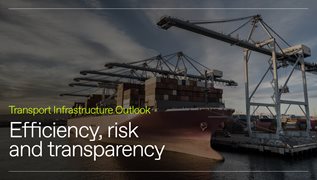Global population growth drives social infrastructure expansion
Population growth emerges as the top global driver of social infrastructure projects at 50%, while regional priorities vary from job creation in the Americas to quality of life improvements in EMEA.
By AnsaradaTue Aug 26 2025Industry news and trends, Innovation, Tenders

From building hospitals and schools to improving transportation and utilities, social infrastructure projects are essential for enhancing the quality of life in any region. Understanding the drivers behind these projects is crucial for policymakers, investors and communities.
Ansarada Procure’s 2025 Social Infrastructure Outlook Report, developed in partnership with Infralogic, uncovers the most important drivers of major social infrastructure projects around the world. The results reveal fascinating regional differences and overarching global trends.
International drivers of social infrastructure projects
On a global scale, population growth is the most significant driver of social infrastructure projects, with 50% of respondents identifying this as a key factor behind these initiatives. This highlights the need for expanded infrastructure to accommodate increasing populations. As the world’s population climbs toward 9.7 billion by 2050, according to the United Nations, the pressures of growth will only become more acute.
Attracting investment follows closely behind population growth as a driver of social infrastructure, with 45% of respondents seeing it as a critical driver, emphasizing the necessity of financial resources to fund these projects.
Improving quality of life is also key, with 35% of respondents highlighting its significance. This reflects a growing awareness of the need to create environments that enhance living conditions and wellbeing. Job creation, reducing inequality, addressing an aging population and climate change mitigation were also noted as drivers, though to a lesser extent.
KPMG’s US managing director, Iain Tester, underlines the complexity of these issues, stating, "There are situations where government agencies don’t really know where or how to make the first move forward. They’d prefer it to be market-driven, but at the same time, the market needs support and clarity on what the government’s role will be."
Regional Insights
1. Job creation and population growth drive social infrastructure in the Americas
In the Americas, job creation is a major driver, with 36% of respondents indicating its importance as a catalyst for social infrastructure projects. Population growth and attracting investment both stand at 42%, underscoring a balanced approach to addressing both demographic changes and economic needs.
Interestingly, reducing inequality is more important in the Americas than in other regions, with 24% of respondents choosing this as a driver behind infrastructure initiatives. This indicates a concerted effort to use infrastructure to bridge socio-economic divides. However, addressing an aging population and climate change mitigation appear to be lower priorities, with only 10% and 12% of respondents naming these factors as catalysts for social infrastructure initiatives.
2. Booming populations in Asia-Pacific support social infrastructure projects
The Asia-Pacific region shows a distinct focus on population growth, with a significant 62% of respondents identifying it as a driver behind infrastructure projects. As the report notes, Asia's population is projected to increase by 700 million by 2050, with India accounting for a quarter of this growth. Cities such as Delhi and Dhaka, already struggling with populations exceeding 30 million, will require 70 million to 90 million new affordable homes by 2030. By 2050, 70% of Asia's population is expected to reside in urban areas, significantly boosting demand for schools, hospitals and other essential infrastructure.
With such significant population growth, attracting investment is crucial, with 54% of respondents acknowledging its importance. However, improving quality of life and job creation were deemed less important, at 26% and 28% respectively, suggesting that economic growth and demographic pressures are more immediate concerns.
3. Quality of life key in Europe, the Middle East and Africa (EMEA)
In the EMEA region, improving quality of life emerged as a top driver, with 46% of respondents highlighting it as a key reason for new social infrastructure projects. These pressures are particularly acute in Europe. Many cities are retrofitting urban spaces for elderly care, upgrading hospitals and enhancing liveability to accommodate aging populations.
Attracting investment and job creation are other drivers of social infrastructure, at 40% and 30% respectively. Interestingly, climate change mitigation is a more pronounced driver of social infrastructure in EMEA than in other regions, named by 14% of respondents. This suggests a growing awareness of environmental sustainability in infrastructure planning.
The differences in regional priorities highlight the varied challenges and opportunities faced by each area. In the Americas, there is a notable emphasis on economic factors, such as job creation and reducing inequality. This could be attributed to the socio-economic dynamics within the region, where infrastructure is seen as a tool for economic empowerment and social justice.
The Asia-Pacific region's focus on population growth and attracting investment reflects its rapid development trajectory. Countries in this region are experiencing significant demographic changes, necessitating robust infrastructure to sustain growth and improve resilience.
In contrast, EMEA's emphasis on improving quality of life and climate change mitigation underscores a commitment to sustainable and inclusive development. This focus reflects both the diverse socio-economic landscape of the region and a recognition of the need for environmentally responsible infrastructure solutions.
Understanding the drivers of social infrastructure projects is crucial for effective planning. Each region has unique priorities shaped by its demographic, economic and social conditions. While population growth and attracting investment are common themes globally, regional variations highlight the importance of tailoring infrastructure projects to local needs and conditions.
However, these trends can clash with fiscal realities. Public funding pressures often reflect competing priorities, forcing governments to redirect resources from healthcare, education and other social infrastructure to address urgent crises such as housing shortages. This reallocation creates fiscal trade-offs. The challenge lies in balancing short-term pressures with sustainable planning, as over-prioritizing one sector may create deficits elsewhere.
These insights provide valuable guidance for policymakers and investors as they navigate the complex landscape of social infrastructure development. By aligning projects with the most pressing drivers, regions can create sustainable, inclusive and resilient communities that meet the needs of their populations both now and in the future.


